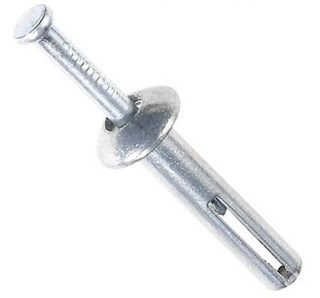OMG, a Dispatch from the Benelux
Antwerp is a lovely city in which to spend a few days talking about trade law, European privacy regulations, and eating everything in sight. There were also more than a few Belgian beers involved.
I am now on a train from Antwerp to Amsterdam. On the way, I figured I would read OMG, Inc. v. United States. "Why?," you might reasonably ask. [Is that remotely the correct way to punctuate that sentence?] Well, it is what I do for you.
Despite the caption, OMG is not about internet-age acronyms. Nor is it about products intended for teenage girls in poorly written CW dramas. [Note: I don't actually know that teenage girls on CW dramas ever say "OMG," but I feel like they might.] Rather, it is about the scope of the antidumping duty order on steel nails from Vietnam. The scope of that order states, in part:
The merchandise covered by the Orders is certain steel nails having a nominal shaft length not exceeding 12 inches. Certain steel nails include, but are not limited to, nails made from round wire and nails that are cut from flat-rolled steel. Certain steel nails may consist of a one piece construction or be constructed of two or more pieces. Certain steel nails may be produced from any type of steel, and may have any type of surface finish, head type, shank, point type and shaft diameter. Finishes include, but are not limited to, coating in vinyl, zinc (galvanized, including but not limited to electroplating or hot dipping one or more times), phosphate, cement, and paint.
OMG imported zinc anchors into the United States. The Court described the zinc anchors as follows:
Each Zinc Anchor consists of two components: (1) a zinc alloy body, which comprises approximately 62% of the total weight of the complete Zinc Anchor; and (2) a zinc plated steel pin, which comprises approximately 38% of the Zinc Anchor’s total weight. The zinc body and zinc plated pin are produced in Vietnam, and then assembled together in Vietnam, resulting in a one-piece article of commerce: a Zinc Anchor. While it may be physically possible to separate the zinc body from the steel pin after the Zinc Anchor has been created, disassembly is not commercially realistic, in light of the Zinc Anchor’s cost and use, as well as the likelihood that the components will be damaged and rendered useless by the disassembly process.The controversy here surrounds the zinc-plated steel pin. The pin is arguably a nail, though it seems unlikely that the pin will be separated from the remainder of the anchor. The value of the pin is about 17% of the value of the anchor. Based on the OMG website, I am pretty certain this is what we are talking about:
This item is used to fasten things to masonry walls. The assembly is inserted into a pre-drilled hole. The pin is then struck with a hammer. The force of the hit, moves the pin deeper into the shaft, which then widens to accommodate the pin. This works as a fastener because the body expands in the hole, not because the nail bites into wood or any other material.
In 2017, the Department of Commerce held that this item is unambiguously within the scope of the relevant order. OMG challenged that decision in the Court of International. On review of a scope determination, the CIT must uphold the decision unless it is unsupported by substantial evidence or otherwise not in accordance with law.
The Court started its analysis with the language of the order. The critical question is what constitutes a nail. The Court concluded that "nail" unambiguously refers to a slim, usually pointed fastener to be inserted by impact. The Court then noted that he pin, which is only part of this fastener, is not itself a fastener. It is initially inserted into a pre-drilled hole and, after hammering, does not grip the material into which it has been inserted. Instead, it expands the zinc body, which then grips the sides of the pre-drilled hole. Furthermore, industry practice is not to refer to these anchors or the pins as nails, although they may be called, for example, "drive nail anchors."
The Court of International Trade, therefore, held that the OMG anchors (and their steel pins) are not nails within the scope of the order. As a result, it remanded to scope determination to the Department of Commerce to complete a revised scope determination consistent with this decision. In other words, Commerce should come back with an order finding these anchors and pins to be outside the scope of the order.



Comments